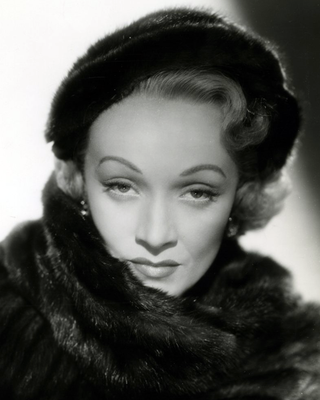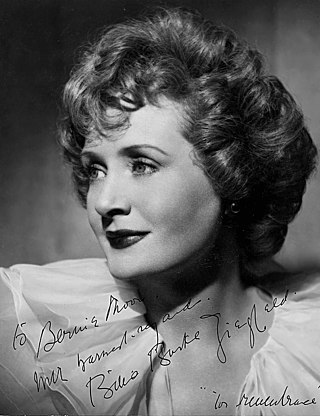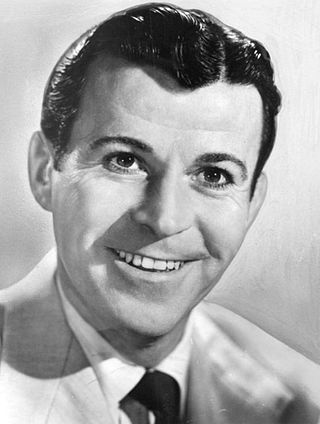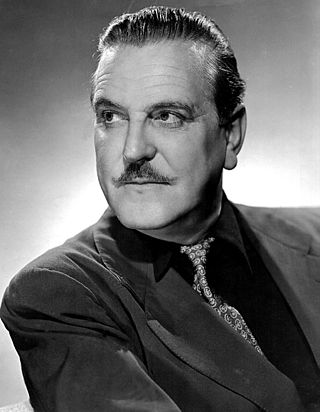
Marie Magdalene "Marlene" Dietrich was a German-born actress and singer whose career spanned nearly 7 decades.
The Six Shooter is a United States Western old-time radio program starring James Stewart as a gunfighter. It was created by Frank Burt, who also wrote many of the episodes, and lasted only one season of 39 episodes on NBC. Initially, it was broadcast on Sundays at 9:30 pm Eastern Time, through October 11. Then it was heard at 8:30 pm for three weeks. Finally, on November 8, 1953, through March 21, 1954, it was broadcast Sundays at 8 pm; beginning April 1, 1954, through the final episode, it was on Thursdays at 8:30 pm. One old-time radio directory called the program "a last, desperate effort by a radio network (NBC) to maintain interest in adventure drama by employing a major Hollywood movie star in the leading role."

An Evening With Marlene Dietrich is a concert-format television special, starring Marlene Dietrich, first broadcast in 1973.
"The Boys in the Back Room" is a song written by Frank Loesser, set to music by Frederick Hollaender and performed by Marlene Dietrich in the film Destry Rides Again (1939). It is often referred to as "See What the Boys in the Back Room Will Have". Her winking performance was a parody of her vampish roles in earlier films such as The Blue Angel (1930) and Blonde Venus (1932). The song became a standard part of her repertoire, second only to "Lili Marlene". She also sang a German version called "Gib doch den Männern am Stammtisch ihr Gift".

His Greatest Bluff is a 1927 German silent comedy film directed by Henrik Galeen and Harry Piel and starring Piel, Toni Tetzlaff and Lotte Lorring. Its title is sometimes translated as His Biggest Bluff. Today, the film is best known for the early role it offered to Marlene Dietrich who was only cast after great effort by her agents. The film was shot at the Grunewald Studios, located in Western Berlin, during January and February 1927. It premiered on 12 May 1927 at the Alhambra-Palast in Berlin.

Club Fifteen is a radio program in the United States that featured popular music. It was broadcast weeknights 30 June 1947 – 21 December 1951. Then, it aired Monday, Wednesday, and Friday nights until 16 January 1953. The name reflected the program's length—15 minutes. The Historical Dictionary of Old-Time Radio noted that the show "is sometimes listed as Bob Crosby's Club Fifteen because Bob Crosby was the original star, although Dick Haymes took over in 1949-50." The program was sponsored by Campbell Soups.

The Martin and Lewis Show is a radio comedy-variety program in the United States starring the comedy duo Martin and Lewis, consisting of Dean Martin and Jerry Lewis. It was broadcast on the NBC Radio Network beginning April 3, 1949, and ending July 14, 1953.
Stars over Hollywood is a radio anthology in the United States. It was broadcast on CBS from May 31, 1941, to September 25, 1954, sponsored first by Dari-Rich, Carnation Milk and later by Armour and Company.
Hopalong Cassidy is a radio western in the United States, featuring the character Hopalong Cassidy created by writer Clarence E. Mulford. It was syndicated via electrical transcription, beginning in 1948 and continuing into 1950. Its network broadcasts began on Mutual January 1, 1950, and ended on CBS December 27, 1952.
For a broader look at the character on which this program was based, see Bulldog Drummond.
Betty and Bob is a 1932-1940 radio soap opera. The soap opera follows the lives of Betty and Bob Drake. Betty was a secretary who falls madly in love with her boss, bachelor Bob Drake. The two wed and each day, the subject matter dealt with everything from love to hate, jealousy to divorce, murder to betrayal, and collusion to insanity.
The Bob Burns Show was an American old-time radio comedy program that starred comedian Bob Burns. The program derived from a character Burns performed for five years on Bing Crosby's Kraft Music Hall entitled "The Arkansas Traveler".
Skippy was an American children's radio serial based on the popularity of the comic strip Skippy. It was broadcast on CBS Radio from January 11, 1932 to March 29, 1935.

The Billie Burke Show was an old-time radio situation comedy in the United States. It was broadcast on CBS April 3, 1943 - September 21, 1946.

Cafe Istanbul is an old-time radio foreign intrigue and adventure program in the United States. It was broadcast on ABC January 6, 1952 - December 28, 1952.

The Dave Garroway Show is an American old-time radio variety program. It was broadcast on NBC from 1947 to June 17, 1955. The title is a generic name that can refer to programs that had other titles including Reserved for Dave Garroway, Dial Dave Garroway, and Fridays with Dave Garroway.

A Day in the Life of Dennis Day is an American old-time radio situation comedy. It was broadcast on NBC from October 3, 1946, to June 30, 1951. It is also sometimes referred to as The Dennis Day Show.

The Frank Morgan Show is an American old-time radio variety program. It was broadcast on NBC from August 31, 1944, to May 31, 1945. It was described in a contemporary trade publication as "one of the highest priced programs on the air."
Rogue's Gallery, first titled as Bandwagon Mysteries, was an American detective drama radio program. Its title is a play on the name of its main character, Richard Rogue, and a collection of photographs of criminals, commonly known as a rogues' gallery.

This Is Nora Drake is an American old-time radio soap opera. It was broadcast from October 27, 1947, to January 2, 1959, first on NBC and later on CBS. Beginning in May 1948, it was also carried on CFRB in Toronto, Ontario, Canada.











